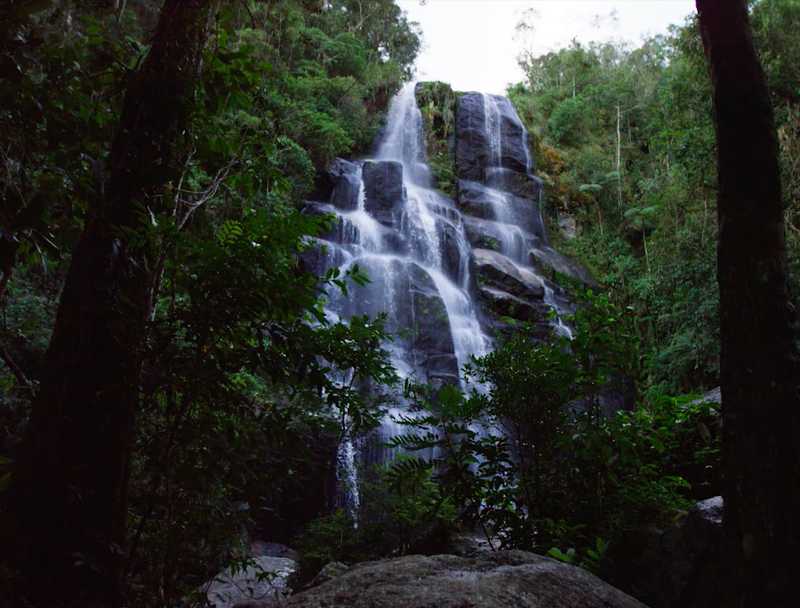
We experience the effects of climate change through water, whether that is through droughts and scarcity, increased extreme weather, flooding, or their impacts on water and sanitation infrastructure. TNC’s report ‘Beyond the Source’ shows that source water protection delivers significant water security improvements.
As can be expected in Silicon Valley, technology has taken center stage as the solution for the world’s problems – including climate change. At an event hosted Tuesday at the Global Climate Summit by CSIRO, Australia’s pre-eminent national science organization, panelists discussed The Future of Water and what solutions California and Australia can teach the rest of the world in the face of a global water crisis.
However, the discussion neglected to crucial role played by nature in water security. Not only can nature-based solutions improve water quality and availability for millions of people, the same solutions can also make a significant contribution to climate change mitigation.
Read more from The Nature Conservancy’s Chief Strategy Officer Giulio Boccaletti.

Climate Change mitigation and Water Security – all thanks to nature.
Dr Giulio Boccaletti, Chief Strategy Officer, The Nature Conservancy
We experience the effects of climate change through water, whether that is through droughts and scarcity, increased extreme weather, flooding, or their impacts on water and sanitation infrastructure.
Our report Beyond the Source shows that source water protection delivers significant water security improvements: four out of five cities can improve water quality using nature-based solutions, and up to a thousand cities globally would see a positive return on investment based on reductions in total utility expenditures. Managing water security in a changing climate means also taking care of the source watersheds from which all communities draw their water.
At the same time, the report shows that source water protection, can deliver significant benefits for carbon sources and sinks at a scale that is meaningful for a global community committed to climate change mitigation. Those results can be explored in our Protecting Water interactive map.
The Paris Agreement is clear on the need for greater attention and focus on forests as a solution to reducing and offsetting greenhouse gas emissions. Safeguarding and restoring the natural areas that make up source watersheds for the purposes of increasing water security will simultaneously avoid emissions that occur through natural land cover conversion and extensive fires, and will contribute to maintaining or increasing carbon sequestration.
The opportunity is enormous. Deforestation is the second largest source of anthropogenic carbon emissions globally, and much of it happens in source watersheds. The research of ‘Beyond the Source’ found that 24.3 gigatonnes of carbon dioxide (6.62 gigatonnes of carbon) emissions resulted from tropical forest loss in source watersheds between 2001 and 2014. In annual carbon emissions terms, that translates to around 76 percent of all carbon emitted as a result of tropical forest loss over that same time. But source watersheds cover only 55 percent of the Earth’s tropical land surface, which means that source watersheds have produced a disproportionately larger fraction of the world’s carbon emissions than their coverage alone would otherwise suggest.
There is a fundamental difference in the carbon structures of different forest types: tropical forests have 56 percent of carbon stored in biomass and 32 percent in soil, whereas boreal forests have only 20 percent in biomass and 60 percent in soil. These ratios are important for carbon-informed land management. While above-ground biomass in the form of vegetation rightly garners attention, soil carbon is an equally important sink.
Estimates of soil carbon vary, but one study concludes that soils contain 5 percent of the world’s carbon pool, compared to 1.2 percent in living organisms and 1.5 percent in the atmosphere (the remainder is in fossil fuels and the ocean). Land degradation, largely through land cover conversion for agriculture, has been a primary source of soil carbon emissions. Importantly, agricultural best management can help retain soil carbon, with the potential added benefits of improvements in production, increased infiltration of water and reduced impacts on soil biodiversity.
Source water protection is about more than forest protection. Land stewardship on working landscapes which happen to be in source watersheds can provide additional benefits for mitigation, through best management practices for cattle grazing and manure management, and for agriculture that include fertilizer methods and applications, tillage and soil structure management, cover crops and crop rotation.
So we take our analysis one step further to calculate the ceiling of additional climate change mitigation through three land-based mitigation activities: avoided tropical forest conversion (targeted land protection), reforestation and cover crops (agricultural BMPs). We calculated a total mitigation potential of over ten gigatonnes of carbon dioxide per year (equivalent to 2.7 million metric tonnes of carbon per year) with reforestation comprising the vast majority of this potential. This is equal to slightly more than one-quarter of the total global carbon dioxide emissions from fossil fuel use and industry in 2015.
We also looked at the climate change mitigation potential that could be provided by reducing sediment and nutrient run-off by percent using forest protection, pastureland reforestation and agricultural best management. Across urban source watersheds where such a reduction, we estimate a mitigation potential of 0.41 gigatonnes of carbon dioxide per year. Finally, we also estimated that a 10 percent reduction in nutrients, where possible, across urban source watersheds would result in 1.11 gigatonnes of carbon dioxide per year of mitigation.
Our results suggest that cities investing in source water protection activities at a level required to achieve meaningful reductions in sediment or nutrients might contribute 4 to 11 percent of the maximum (ceiling) mitigation potential. Overall, we estimate that if land-based mitigation activities are fully implemented in urban source watersheds, they could provide up to 16 percent of the total mitigation needed in the year 2050 across all sectors for a likely chance of limiting warming to 2 degrees Celsius.
Whilst this estimate is likely to be the ceiling of climate change mitigation across source watersheds for the three types of activities described above, it does not consider other agricultural practices like improved application of nitrogen and manure or planting trees in croplands, which also have climate change mitigation benefits.
The evidence is compelling – nature-based solutions for water security are, in large part, nature-based solutions for climate change mitigation and vice versa. Water security is a fundamental imperative for the twenty-first century. Readiness to confront the impact of a changing climate on water security is an essential attribute of climate-resilient communities. The fact that such readiness also implies opportunities to mitigate emissions should make all countries consider these investments in nature-based solutions.
